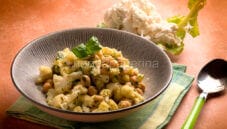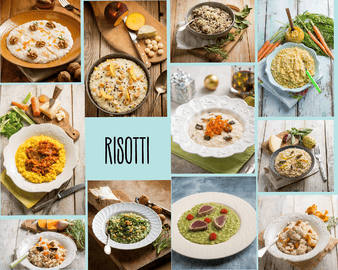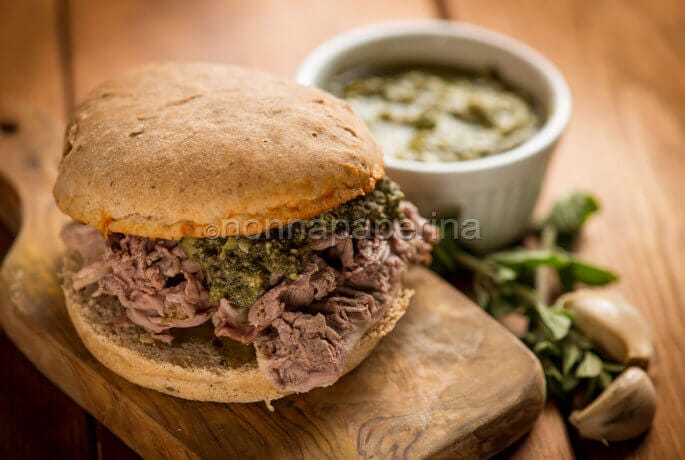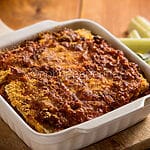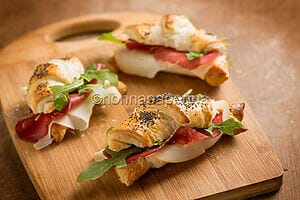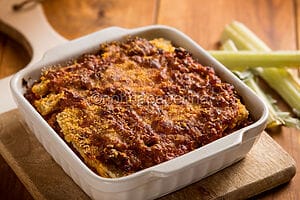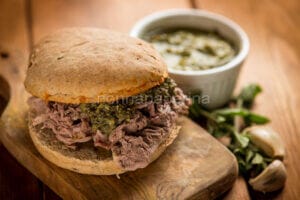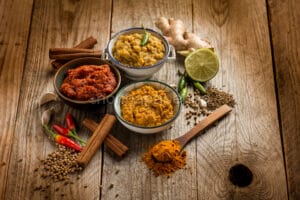
Curry, the different varieties and combinations in the kitchen
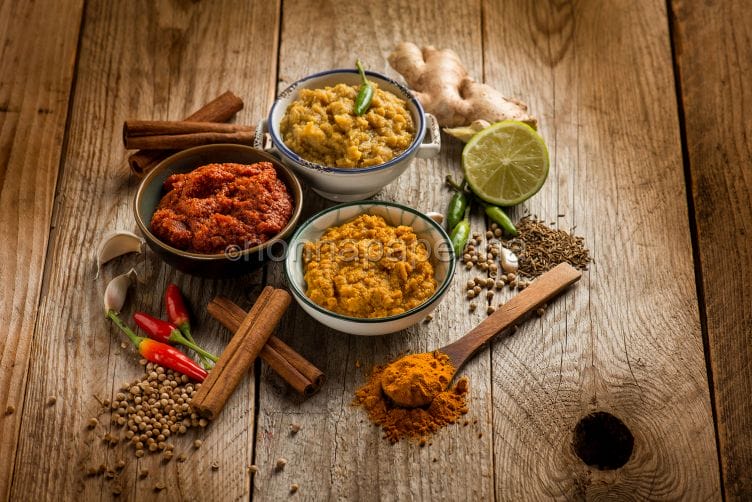
The peculiarities of Strudel with Skyr and curry
Strudel with Skyr and curry is a truly special dish. In fact, it looks like a dessert, but it is not. As implied by the name, vegetables and fruit are substituted with creams and fruit, as well as a variety of other components that promote both taste and health. Thus, we are discussing a food that is similar to traditional savoury pies, but with some significant changes to the theme. Above all, a strudel-like visual representation.
The abundance of ingredients, both in terms of number and quality, is remarkable. They are all healthy, so the dish is nutritious and also quite light. Finally, the most important touch of originality of this recipe should be mentioned, namely the Skyr curry sauce. Two powerful and distinct flavours come together to form this sauce, which perfectly complements one another to make the perfect companion.
Recipe curry
Preparation curry
- To prepare the vegetable strudel, start by cutting the chard and separating the leaf from the white part.
- Cut the white chard and pull the leaf towards the other side (this will also remove any filaments). Turn the chard and repeat the operation for all the leaves.
- Tear the leaves into pieces using your hands, then cut the white chard into small pieces.
- Now wash in plenty of cold water to remove the soil and repeat the operation several times. Finally, let everything drain.
- Bring a lot of water to a boil in a pot, add salt, and immerse the leaves for about a minute.
- To keep the leaves bright green, remove them with a slotted spoon and let them cool under running water. After that, set them in a colander or on a cloth to dry.
- After five minutes of cooking, drop the chard into the cooking water with the leaves; drain the chard at the end of this step.
- Next, proceed to chop the fontina into tiny pieces.
- Next, thoroughly wash, pat dry, and use your hands to tear the basil into small pieces.
- Remove the peel from the onion and slice it. Continue preparing the vegetable strudel, washing and peeling the broccoli, carrot, and courgette.
- Then cut the carrot and courgette into cubes and cut the broccoli into small pieces.
- Brown in a pan with the garlic cloves, the chard, and the onion, then add the broccoli, carrot, and courgette.
- Season with a little salt and pepper, then cook for about 10 minutes and remove the garlic as soon as the vegetables are cooked and slightly crunchy.
- Finally, pour the vegetables into a bowl to let them cool.
- Next, add the chopped fontina and basil, and thoroughly combine everything.
- Now you can roll out the puff pastry and place the mixture you prepared with the fontina and vegetables in the centre.
- Close the puff pastry to create a strudel, then brush it with the egg and make light diagonal cuts to facilitate cooking.
- Bake for 20 minutes at 180 degrees.
- In the meantime, mix the Skyr with extra virgin olive oil, a teaspoon of curry, a little black pepper, and a little salt.
- Once cooked, let the strudel cool and cut it into slices.
- Serve the vegetable strudel with the delicious sauce you have prepared.
Ingredients curry
- 1 jar of Skyr
- 1 roll of puff pastry
- an onion
- 1 courgette
- 300 gr. of chard
- 1 carrot
- 10 broccoli florets
- 80 gr. of fontina cheese
- a few basil leaves
- 2 cloves of garlic
- 1 egg
- 1 teaspoon of curry
- 3 tablespoons of extra virgin olive oil
- a pinch of salt and pepper
One of the most popular spices in the kitchen
There is a bit of confusion surrounding curry; in fact, some believe that this spice coincides with turmeric, while in reality it is only one of the many ingredients. To reinforce this prejudice, there is also the colour, which characterises both turmeric and this spice. The most popular dish in our region is Indian curry, which dates back to the English occupation of India and helped spread this kind of spice around the world. The combination of turmeric, coriander, cumin, chilli pepper, and mustard seeds is specifically referred to as Indian curry.
In actuality, many Asian countries have their own curry traditions, which explains why there are so many varieties. In addition to Indian curries, Thai curries are the most well-known. Their main characteristic lies in being real pastes. Regardless of the type of reference, it has some recurring characteristics. First of all, it is decidedly aromatic as it is composed of various types of spices. Curry is spicy, although the degree of spiciness varies greatly from one variety to another. By definition, the spices in it are nutrient-dense with qualities that produce the pseudo-therapeutic effect. Antibacterial, antiseptic, and anti-inflammatory properties are the most frequently seen. Not to mention the presence of antioxidants, which act as an anti-cancer function.
The ingredients of authentic curry
Curry is a carefully studied blend of spices, usually composed of:
Black pepper. In some areas, long pepper is also used; it is spicy but different from red pepper and is aromatic. White pepper is almost never used in curry.
Chilli. The most important ingredient is dried red chilli pepper, which is ground into a fine powder and determines how “spicy” the curry becomes. The seeds are sometimes removed because they are too spicy. Green chilli peppers can be made into a paste but are not allowed in regular curry powder.
Cloves, cinnamon, and cardamom. Although they are different aromas, they blend well in curries and can be considered in a single group. The curry’s character only changes if one or the other prevails too much; when they are well balanced, they produce a rich and fragrant finish.
Coriander. Among the spices for curry, coriander seeds cannot be missing. Before being ground, they must be lightly roasted. The aroma is delicate and rather sweet, and almost all curry powders contain massive quantities of it. This is in fact the spice to take into consideration first, in relation to the quantity of meat to be cooked. It determines the basic aroma, just as chilli pepper determines how spicy the flavour gets.
Cumin. There are two varieties (black and white) and different strengths of this herb, which is frequently mistranslated as “caraway” in recipes. In curry, the scent is stronger and more noticeable than others.
Curry leaves. They give Madras curry powder its distinctive aroma. If the leaves are fresh, they completely change the flavour of the spice blend, but in my experience, the leaves sold in stores have already lost most of their aroma.
Fenugreek. The fenugreek seed, lightly roasted and ground, has a distinctive aroma and is a common ingredient in curry powders; it can be more or less strong, so use sparingly.
Ginger. Dried ginger may or may not be added to some curry powders, making the blend more or less spicy.
Mace, Nutmeg, and Allspice. These and other spices are used in curry but are less common, although allspice is used in pilaf and mace in Malaysian curries.
Mustard Seed. Brown mustard seed is used in many curry powders, but not because it is spicy. When roasted, it takes on a strange, nutty flavour and is used extensively as a finish to Indian dishes. Mustard powder, whose spicy flavour is allowed to develop freely, is rarely used in Indian dishes.
Poppy seeds, lentils. They add some flavour but are usually added to enhance the base.
Turmeric. It adds colour to curry, and this is often its primary function. Curry powders that contain too much turmeric have a pungent taste and sometimes an earthy smell, reminiscent of spices left in a pantry. In many places, turmeric dominates fish curries.
Asian curries come in a variety of forms and typically include salt, onion, garlic, and a sour ingredient like tamarind, lime, unripe mango, or other sour fruits. Other possible flavourings include mustard oil, coconut, lemongrass, galangal, asafoetida, raw sugar, and so on.
The main characteristics of Thai curry
Thai curries are of great interest, as they are based on a cuisine specialised in spice-based preparations. This has led to the development of a large variety of curries; in this regard, I will list an overview of the main types.
Red curry. It is one of the most famous varieties of all, on par with the Indian one. The shade is given by the presence of red chilli pepper and shrimp paste. For the rest, it sees the presence of cumin, garlic, galangal root, lemongrass (or citronella), cinnamon, coriander, red basil, and pepper. It is usually used to season shellfish, but it is also good on meat.
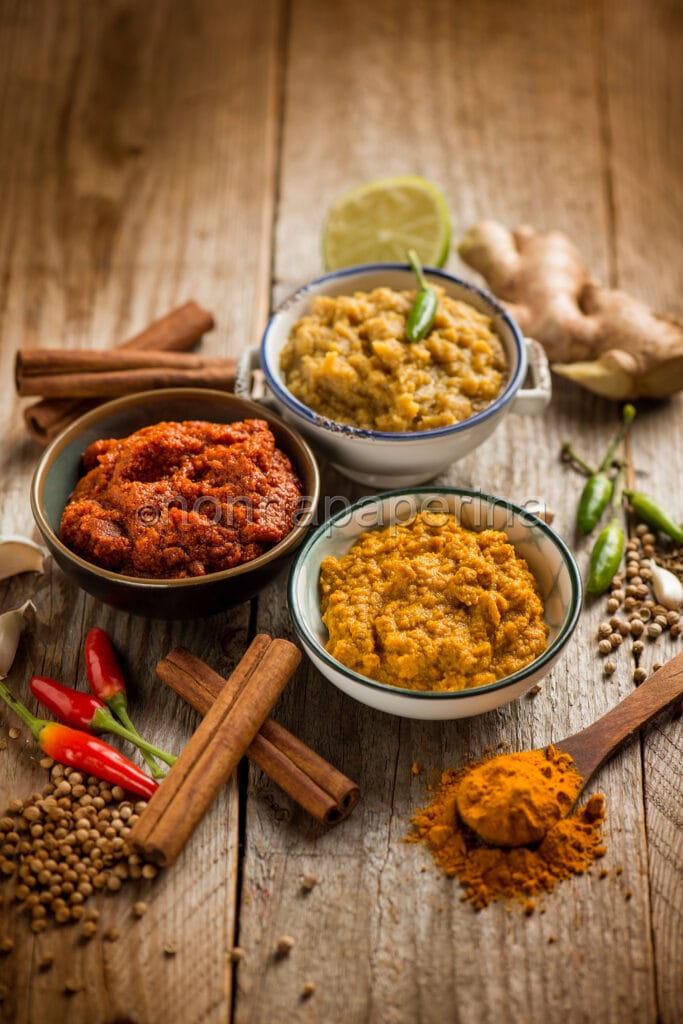
Yellow curry. It is very similar to the Indian one; the only difference lies in the type of turmeric. In this case, the fresh one is used, which, among other things, gives it a golden shade.
Orange curry. It is similar to red curry, but the shrimp paste is more predominant. Both fresh and dried chilli peppers are used.
Green curry. It is one of the most niche varieties, also because it is extremely spicy. The colour is given by the green chilli peppers. It is often used to flavour fish main courses, soups, and vegetables.
Other unique types of curry
Here is a quick summary of the more specialised and intriguing varieties of curries that are available on the market in addition to the primary varieties. .
Phanang. The paternity of this curry is disputed between Thailand and Malaysia. It is also the most different and particular; in fact, it is made with peanut paste and coconut milk. It goes well with vegetables and white meats.
Rempah. It is similar to red curry. The only notable difference lies in the presence of shallots, which makes this paste a little sweeter, therefore more suitable for meat than fish.
Massaman. It is a paste made with turmeric, cumin, coriander, cinnamon, garlic, lemongrass, and galangal root. It is often added to fish sauce.
Sambal oelek. It is the most “acidic,” in fact it is also made with salt, vinegar, lemon juice, and tamarind.
How to make curry paste?
It goes without saying that every curry paste has a unique recipe, in part due to the wide variations in ingredient amounts. Nonetheless, certain recurrent concepts and methods can be found. For instance, it’s always a good idea to let dried spices soak for a little while when using them in a dish. They should be toasted first, then chopped if they are fresh. As an alternative, any wet ingredients (such as pastes) ought to be combined in a mixer or food processor.
The composition of the paste also follows shared rules. Once the ingredients are mixed, they must be worked at maximum speed in order to facilitate the amalgamation and avoid the formation of lumps or the mixture from collapsing. As for storage, all curry pastes must be kept in a cool place. The good news is that they can be stored for a long time in the refrigerator, up to a month. If you opt for the freezer, they can be stored for up to a year.
In addition to the recipe below, I recommend the baked vegetable curry. A dish inspired by Indian cuisine. It can be considered a very spicy side dish or as a light first course. It is made with legumes, vegetables, spices, and various condiments. It is therefore a true explosion of colours and flavours, which will not fail to amaze your guests with its exotic references and bright shades. I also suggest the Skyr curry sauce-topped vegetable strudel, which is a unique dish due to the sauce.
The secret of this strudel
The secret of this vegetable strudel is Skyr, the main ingredient of the accompanying sauce. This unique dairy product comes from Iceland and is hardly known in Italy. A lot of brands make this product, but they carefully consider the quality of the contents, so before making a purchase, always read the label.

By the way, Skyr is a yoghurt that can blend sour and sweet flavours. It has a consistency that is comparable to Greek yoghurt, however slightly thicker. It works well for creating cheesecakes, sweet cakes, and savoury pies like this one, as well as recipes with any dairy-based filling. It is also ideal as a high-quality, delicious snack. Additionally, it has superior nutritional qualities; 11% of its content is made up of proteins, while fats represent only 0.2%. It is very rich in calcium. Skyr can be eaten by itself, with a spoon, or even for breakfast.
How to use curry in the kitchen? Let’s see some recipes.
COULD IT BE INTERESTING FOR YOU

Brioche bread with bresaola and scamorza cheese: the...
The entire bresaola flavour Bresaola is the standout ingredient among the numerous that make up the stuffing of this brioche bread. In addition to having a savoury flavour, this ingredient offers a...

Pizza with onions, walnuts, and gorgonzola cheese, an...
Why red onions? The red onion from Tropea is one of the main players in this pizza with onions. This particular kind is so well-liked in Italy that, fifteen years ago, it was awarded the PGI brand....
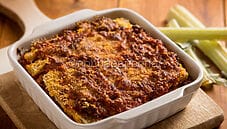
Cardoons with Parmesan, an easy and tasty dish...
What to know about cardoons The most unique component of this Parmigiana are the cardoons, so it's helpful to go deeper into the subject. Due to their rustic flavour, cardoons are a highly excellent...



